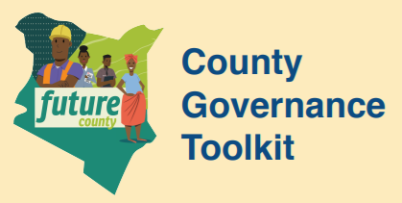What are the stages in the county policy making process?
1. Policy Initiation
- Policy initiation is a function of a number of players including government Ministries, Departments and Agencies (MDAs), citizens, institutions, and stakeholder groups among others.
- Once the proponent generates the idea, they inform the County executive concerned who propels it to the ministerial level. The relevant MDA formulates policy guidelines, which is put into writing for discussion purposes within the MDA and other government departments.
2. Research
- During this stage, the respective MDA undertakes comprehensive and comparative research on the matter to be regulated.
- Expert opinion on the problem at hand should be sought.
3. Negotiation and Public Participation
- In this stage the substantive contents of the draft policy framework are debated and negotiated with various stakeholders, such as opposition parties, the public, non-governmental organisations and all other interest groups. During this time, the MDAs prepare discussion documents on the policy or law to facilitate debate, comment and feedback.
- Stakeholder participation may take different forms such as attending committee hearings, setting up meetings with departmental heads, and organising workshops, seminars or retreats.
- Other forms include using the media to outline the issues and similar entities to lobby, publication of extracts in newspaper articles or other online platforms and making contributions during public fora and submitting written opinions and memoranda.
4. Finalisation of the Policy
- The policy is finalized by the relevant MDA. This comes after the policy has been properly debated and the concerned MDA crystallizes the issues and options available and draws up a final policy document.
5. County Executive Committee Approval
- Once the relevant County Executive Committee Member, is satisfied that proper analysis has been conducted, different approaches have been identified and discussed, and that the policy document outlines the best option available to address the policy issue, he/she submits the policy to the County Executive Committee for approval.
6. County Assembly Approval
- After approval by the County Executive Committee, the policy document is published and tabled in the Assembly for debate and approval. The policy document may be approved with or without amendments.
- Where significant changes are likely to be made on the policy, the views of the Executive may be invited for value addition and further clarification. Also, the policy may be subject to further public and stakeholder consideration.
7. Assent
- The approved policy is sent to the County Governor to formally endorse, by affixing the County Seal and signing the policy. This process is called ‘assent’.
8. Publication
- Upon assent, the policy is published as a White Paper. The Executive is expected to widely circulate the policy and to keep the public informed of the likely effects of the Policy. The White Paper is a statement of intent and a detailed policy plan, which often forms the basis of legislation.
9. Draft Bill (if needed)
- Some policies are ‘self-executing’ policies, which means they are effective immediately without the need for legislation or other type of implementing action.
- For other policies, it may be decided that a new law is necessary to achieve its objectives and aid implementation, the concerned MDA will commence the process of drafting the Bill to give full effect to the policy directives. In its early stages it is called a legislative proposal. Once it has been tabled it is called a Bill.
